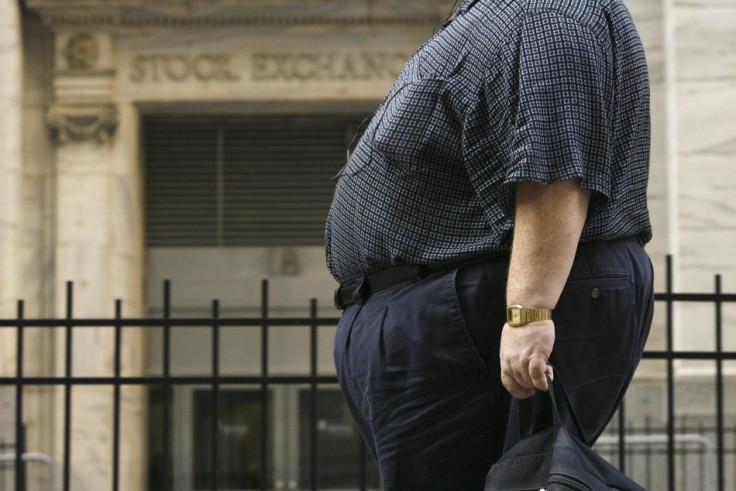Obesity in America: Rate Higher Than Previously Thought, BMI Unreliable

Obesity in the United States may be an even larger problem than previously thought, according to a new study. Body mass index, a ratio of height to weight, is often used to determine whether a person is overweight or obese. But BMI is unreliable and often misrepresents their overall health, according to the study.
BMI was introduced between 1830 and 1850 and is measured using a formula that divides your weight by the square of your height. For example, the average male is 5 feet 9 inches and weighs 194 pounds, according to the Centers for Disease Control and Prevention. To calculate your BMI, multiply your weight by 703 to convert it into metric units (194 x 703 = 136,382). Then, convert your height into inches and square it (692= 4,761). Finally, divide your weight by your height. The average male has a BMI of 28.6 (136,382/4,761=28.6).
A BMI between 25 and 30 is overweight. Higher than 30 is obese.
However, BMI doesn't take into account your body fat percentage, the best way to determine what category you fall into, according to the study. A body fat measurement of 25 percent or more for men and 30 percent or more for women is considered obese by the American Society of Bariatric Physicians.
Researchers used a dual-energy X-ray absorptiometry (DEXA) scan to measure body fat, muscle mass and bone density, and found that 30 percent of study participants who fell into the overweight range by BMI standards were actually obese.
Roughly 30 percent of Americans are obese, but when you use other methods, closer to 60 percent are obese, Dr. Eric Braverman, lead researcher and president of the Path Foundation, a nonprofit medical research group, told HealthDay. We call BMI the 'baloney mass index.'
BMI is particularly unreliable for women, possibly because women's muscle mass deteriorates faster than men's as they age, according to the study. Almost half of the women tested were considered overweight by BMI, but obese by body fat percentage, compared to only a fourth of the men.
A 55-year-old woman who looks great in a dress could have very little muscle and mostly body fat, and a whole lot of health risks because of that -- but still have a normal BMI, Braverman told CNN.
Over 35 percent of U.S. adults over the age of 20 are obese, and since 1985, the percentage of obese people has increased steadily. In 1985, no state had an obesity rate above 14 percent. By 2010, no state had an obesity rate under 20 percent, according to the Centers for Disease Control and Prevention. Medical costs and loss of productivity from obesity total $270 billion annually, according to the Society of Actuaries.
While DEXA scans would be the best way to determine what weight category people fall into, they are expensive for both the patient and doctor. Instead, researchers recommend using BMI in conjunction with a measurement of leptin, a hormone that circulates in the bloodstream and is correlated to body fat levels. Leptin levels range from zero to 200, with optimum levels under five and normal levels around 10, according to the study. Leptin levels can be lowered through diet and exercise.
Making these changes now can save the U.S. a fortune down the road, if it allows us to alert more people to their risks and prevent them from getting worse. Braverman told CNN.
But there isn't much data on the health benefits of lowering leptin, Dr. William O'Neill, professor of cardiology at the University of Miami, who was not involved in the study, told HealthDay.
We will have to see if elevated leptin levels are a cause of a bad outcome, he said. This hasn't been done yet. We don't know if leptin can be a primary target -- it may just be a marker of body fat.
Researchers also recommended lowering the cutoff for obesity to 28 for men and 24 for women.
The journal PLoS ONE published the study on Monday.
This study isn't the first time BMI has been called unreliable. Dr. Keith Devlin, British mathematician and math guy on National Public Radio, called the measurement snake oil in 2009 and said it fails on several fronts.
There is no physiological reason to square a person's height, Devlin told NPR. Quetelet [the mathematician who introduced BMI] had to square the height to get a formula that matched the overall data. If you can't fix the data, rig the formula! Moreover, it ignores waist size, which is a clear indicator of obesity level.
BMI also doesn't take into account the weight of bone and muscle and the distinct categories don't make any sense, Devlin said.
It is embarrassing for one of the most scientifically, technologically and medicinally advanced nations in the world to base advice on how to prevent one of the leading causes of poor health and premature death (obesity) on a 200-year-old numerical hack developed by a mathematician who was not even an expert in what little was known about the human body back then, he said.
© Copyright IBTimes 2024. All rights reserved.





















